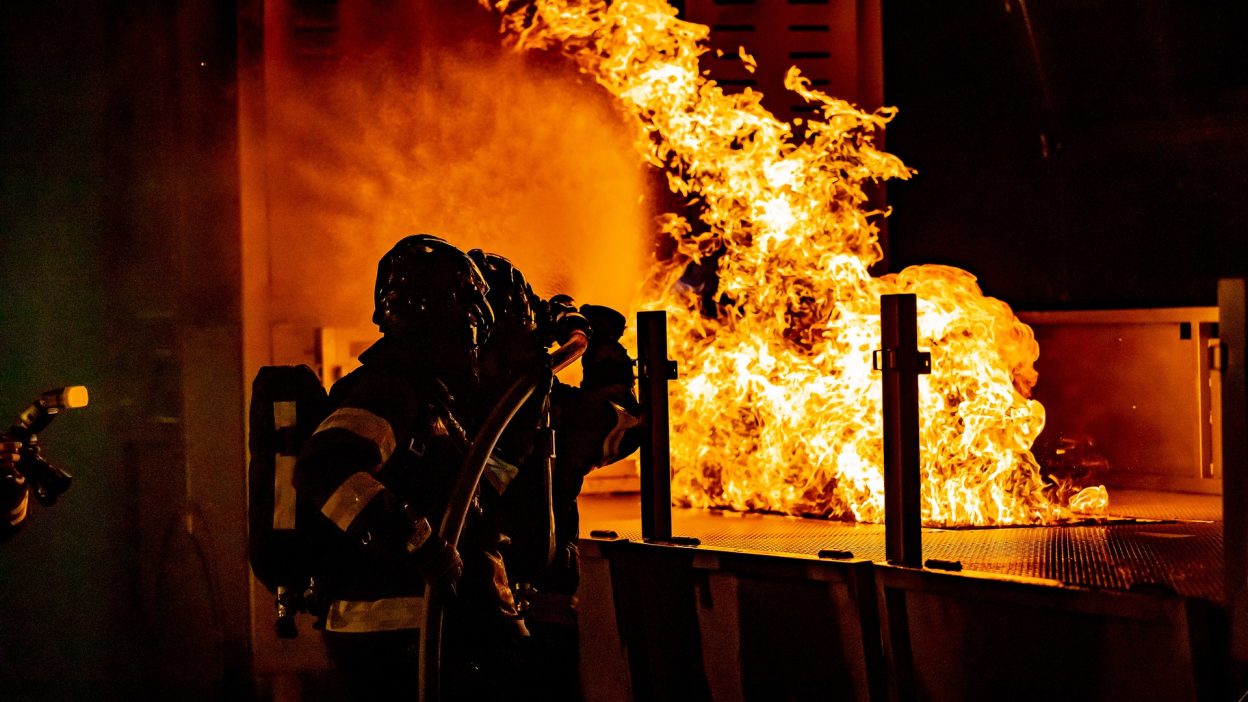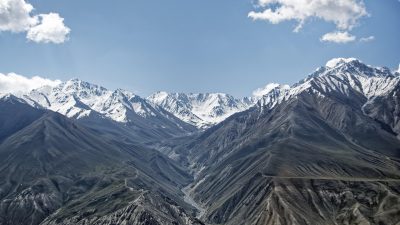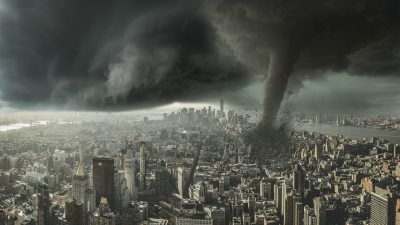America’s Deadliest Firestorm That History Forgot
On 8 October 1871, a firestorm unlike any other consumed the small town of Peshtigo, Wisconsin, reducing it to ashes within hours. With flames reaching over 100 feet high, a heat so intense that metal melted, and winds turning into fire tornadoes, the disaster claimed over 1,200 lives, making it the deadliest wildfire in U.S. history.
Yet, despite its scale and horror, this tragedy was overshadowed by the Great Chicago Fire, which erupted on the same night. While Chicago’s fire made headlines, Peshtigo’s devastation was largely forgotten, buried under history’s weight.
But why did this inferno rage so fiercely? Could it have been avoided? And why does the world barely remember this catastrophic event? This blog uncovers the forgotten nightmare of the Peshtigo Fire and the dark truths that remain largely untold.
1️⃣ The Night Wisconsin Became a Furnace: How It All Began
The Peshtigo Fire wasn’t just another wildfire—it was a full-fledged firestorm, a rare and deadly event where flames grow so intense that they create their own weather system.
The summer of 1871 had been unusually dry, leaving the forests of Wisconsin parched and brittle. Loggers had stripped the region of trees, leaving behind highly flammable debris. Farmers, unaware of the looming danger, used fire to clear land, a common but risky practice.
By the evening of 8 October, a cold front moved in, bringing with it violent winds. These gusts swept across the land, fanning small fires into a massive inferno. Within minutes, flames raced towards Peshtigo at an unstoppable speed, engulfing buildings, trees, and people alike.
The fire moved so fast and unpredictably that many never stood a chance. With no communication systems, no emergency alarms, and no fire departments equipped for such an event, Peshtigo was doomed before anyone could react.
2️⃣ A Firestorm of Unimaginable Horror: The Science Behind the Disaster
Unlike an ordinary fire, Peshtigo’s blaze became a firestorm, a self-sustaining inferno that fed off its own energy. The heat was so intense that it generated its own wind currents, causing flames to spiral into tornado-like vortexes that swept across the town.
These fire tornadoes were deadly—some lifted entire roofs and flung people into the air, while others created explosions of flame that devoured entire blocks within seconds.
The combination of dry conditions, hurricane-like winds, and human negligence created a perfect storm for catastrophe. The town’s wooden buildings, sawdust-covered roads, and lack of firefighting infrastructure turned Peshtigo into a death trap—one that was impossible to escape once the fire took hold.
3️⃣ The Toll of Devastation: Deaths, Injuries, and a Town Reduced to Ashes
- A Staggering Loss of Human Life
Over 1,200 people perished, though some estimates suggest the actual toll exceeded 2,500. Many victims were burned beyond recognition, while others vanished without a trace in the intense heat. - A Town Erased in Hours
Peshtigo and surrounding villages were annihilated. More than 1.5 million acres of land were reduced to ash. Some metal objects melted, and even the soil itself was scorched beyond repair. - Mass Graves and Unmarked Burials
With so many dead, survivors had no choice but to bury victims in mass graves. Many bodies were found charred and fused together, making identification impossible. To this day, the true number of casualties remains unknown.
4️⃣ ‘The Air Was on Fire’: Terrifying Survivor Accounts
The stories of those who lived through the Peshtigo Fire are among the most horrifying in history. Survivors described the sky turning blood-red, a roaring sound louder than a hurricane, and a wall of fire moving at terrifying speed.
People fled towards the Peshtigo River, believing water would save them. But as they waded in, they found that even the river was burning—the fire’s heat was so intense that flames danced on the water’s surface. Some drowned in panic, while others boiled alive in the extreme temperatures.
Even those who escaped the flames weren’t safe—many suffered horrific burns, their skin peeling away as they ran. Entire families perished together, leaving behind nothing but ash and unclaimed belongings.
For the few who survived, the memory of that night haunted them forever.
5️⃣ The Fire That No One Tried to Stop: A Failure of Prevention
Despite clear signs of danger, authorities did little to prevent the disaster.
- The town had no fire department.
- There were no firebreaks to slow the spread.
- Officials ignored warnings about land clearing fires growing too large.
- The winds were unusually strong, yet no precautionary measures were taken.
When the fire finally struck, there was no coordinated effort to fight it. The town was left to burn unchecked, and residents were forced to fend for themselves.
To make matters worse, after the disaster, Peshtigo received almost no aid. While Chicago was flooded with donations, Wisconsin’s deadliest tragedy was largely ignored.
6️⃣ Was It Nature or Negligence? The Hidden Causes of the Fire
While strong winds and dry conditions played a role, the Peshtigo Fire was made worse by human actions.
- Uncontrolled Logging: The timber industry left behind flammable debris, turning the forest into a firetrap.
- Sawdust-Covered Streets: The town’s roads were literally paved with fuel, helping the fire spread faster.
- Land-Clearing Burns Gone Wrong: Farmers and loggers routinely set small fires to clear land, but with no regulations in place, these burns became ticking time bombs.
Had there been fire safety measures, such as cleared buffer zones or controlled burns, the tragedy could have been prevented.
7️⃣ The Forgotten Disaster: Why Does No One Remember Peshtigo?
- Chicago Stole the Headlines
The Great Chicago Fire, occurring the same night, captured the media’s attention, leaving Peshtigo’s suffering largely unreported. - A Town of Labourers, Not Elites
Unlike Chicago, which housed wealthy industrialists and politicians, Peshtigo was a working-class logging town, meaning fewer people cared about its fate. - No Famous Landmarks Were Lost
Chicago’s fire destroyed prominent buildings, but Peshtigo’s destruction, though massive, had no famous structures, making it easier to forget.
8️⃣ Could It Happen Again? The Risk of Modern Firestorms
The Peshtigo Fire was a historic disaster, but could such a firestorm happen again? Unfortunately, the answer is yes. With climate change, increasing droughts, and poor land management, the conditions for another catastrophic wildfire are already in place.
Today, rising temperatures have led to hotter, drier seasons, increasing the likelihood of large-scale wildfires. In regions like California, Australia, and Southern Europe, fires are more frequent and intense than ever before. Strong winds, dry vegetation, and human negligence can turn a small flame into a raging inferno—just like Peshtigo.
Despite modern firefighting technology, some wildfires spread too fast to control. Recent disasters, such as the 2018 Camp Fire in California and Australia’s 2019–2020 Black Summer Fires, prove that firestorms are still a major threat. If authorities fail to take stronger precautions, another Peshtigo-scale tragedy is inevitable.
9️⃣ The Lessons That Still Echo Today
The Peshtigo Fire forced a rethink on fire safety, leading to better building codes, fire prevention policies, and emergency response systems. However, despite these improvements, many modern disasters mirror the same mistakes.
Fires in California, Greece, and Australia have destroyed thousands of homes due to poor land management and slow emergency responses. Governments still underestimate fire risks, allowing communities to expand into fire-prone regions, much like Peshtigo.
The world must learn from history. Stricter laws on land development, controlled burns to reduce dry vegetation, and advanced early warning systems are essential to preventing another firestorm catastrophe. Without serious action, history will repeat itself—at an even greater scale.
10 The Forgotten Fire That Should Never Be Forgotten
The Peshtigo Fire remains one of the deadliest wildfires in history, yet it is largely forgotten. The main reason for this is the Great Chicago Fire, which occurred on the same night and stole media attention. Peshtigo, being a small rural town, did not receive the same recognition, and few historical records exist.
However, the lessons from Peshtigo are still relevant. As climate change worsens and fire seasons grow longer, we must remember that firestorms are not just events of the past. The silence surrounding Peshtigo should serve as a warning—if we fail to take action, another disaster of this scale will happen again.
FAQs About the Peshtigo Fire 1871
1️⃣ How many people died in the Peshtigo Fire?
The official death toll was around 1,200, but some estimates suggest over 2,500 people perished. Many bodies were never recovered due to the fire’s intensity.
2️⃣ Why was the Peshtigo Fire so deadly?
The fire spread at an extreme speed, fuelled by strong winds, dry conditions, and human negligence. It became a firestorm, creating fire tornadoes that incinerated everything in their path.
3️⃣ Why is the Peshtigo Fire not well known?
It happened on the same night as the Great Chicago Fire, which dominated news headlines. Peshtigo, a small working-class town, was overlooked, and few records survived.
4️⃣ Could a firestorm like Peshtigo happen today?
Yes. With climate change, deforestation, and poor land management, modern firestorms are becoming more common. Wildfires in California, Australia, and Europe prove that another Peshtigo is not just possible—it is likely.
5️⃣ What was the biggest lesson from the Peshtigo Fire?
The disaster highlighted the importance of fire prevention. Stronger building codes, controlled burns, and better emergency responses could have saved lives. Many modern communities still ignore these lessons, putting millions at risk.




